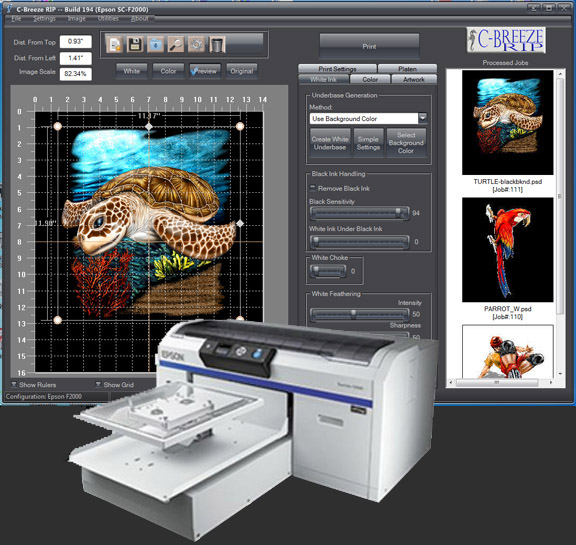
Using the hardware that contains the RIP, our production team determines and sets the imposition of a piece, adjust colors as needed, and completes higher-level functions such as preparing and running variable data print jobs. The file, now Ripped into the language of the printer, is however editable in useful ways that we printers need. A grid pattern of dots that form an image, just as on a television, or the screen you are looking at now. The word raster, in case you were wondering, refers to patterning of the image of the file. But when the file is sent to the rip, that functionality is ended, and we end up with a rasterized file with printing as its main function. This is an endlessly editable file that designers know and love.
#Why use a printer rip software
The file type created in software such as Adobe InDesign or Adobe Illustrator is called a vector graphic. The pixels we see on screen are translated to the pattern of ink dots we will see on paper. This means that the file’s contents are mapped to the bits or pixels on the screen. Mostly this alters the file’s resolution, and creates what is known as a bitmap or raster image. What in the world does that mean?Įssentially, it is a process for translating an existing file type such as a PDF, postscript, or something else into a file type that the printer knows and understands. In a digital job however, we send the file to a print server for a final stage of processing known as Raster Image Processing, or you guessed it – the RIP. For an offset job, we would send it to our plate-maker, and print the necessary plates to go on press. And we definitely don’t want that.Īfter the file is pre-flighted, the next step is to get it to the right machine for printing. This involves reviewing things such as color spaces (CMYK or RGB), fonts, transparent elements, and any of a hundred things that if left uncorrected could really make our prepress and production teams cranky.

This means we go through a file and look for errors, and then make corrections to match our equipment. The first part of the process is called pre-flighting.

And we do this in a way that suits our shop’s workflow. Usually when we receive a print-ready file from a customer, we still have to bring it into our system and get it ready to run on our machines. This is a key part of the process of preparing a digital file for print. Instead, our prepress department will take the digital file you send us and prepare and send it to a special print server that we call a RIP. Okay, don’t worry, no one is going to be ripping apart your design – either figuratively or literally. Thanks for giving us your file, we will give your design over to our prepress department, and they will RIP it and get it out. Here is a brief explanation of what it means.

This is some printer’s lingo we use a lot around the shop.

Learn about the terminology that Microsoft uses to describe software updates.RIP, or the RIP, or ripping a file. Microsoft has confirmed that this is a problem in the Microsoft products that are listed in the "Applies to" section.
#Why use a printer rip install
To fix this issue, install the May 2016 update rollup for Windows RT 8.1, Windows 8.1, and Windows Server 2012 R2 (KB3156418). This issue occurs because of the incomplete state cleanup in code that is now fixed. When this issue occurs, the "Preview not available" issue is permanent for every kind of printers (Network printers, as well as the local native XPS Printer). Users who create their own print application by using Windows App print APIs in Windows 8.1, Windows RT 8.1, or Windows Server 2012 R2 may sometimes get an issue where the print preview displays a "Preview not available" message and printing stops working.
#Why use a printer rip pro
Windows Server 2012 R2 Datacenter Windows Server 2012 R2 Standard Windows Server 2012 R2 Essentials Windows Server 2012 R2 Foundation Windows 8.1 Enterprise Windows 8.1 Pro Windows 8.1 Windows RT 8.1 More.


 0 kommentar(er)
0 kommentar(er)
